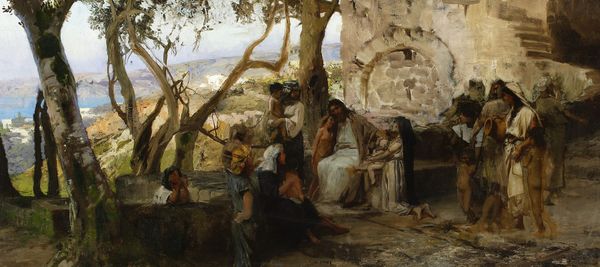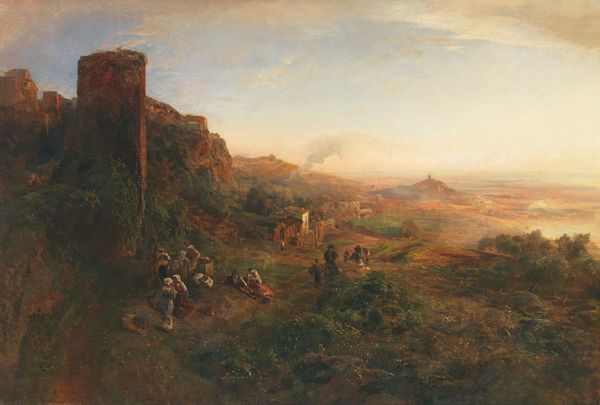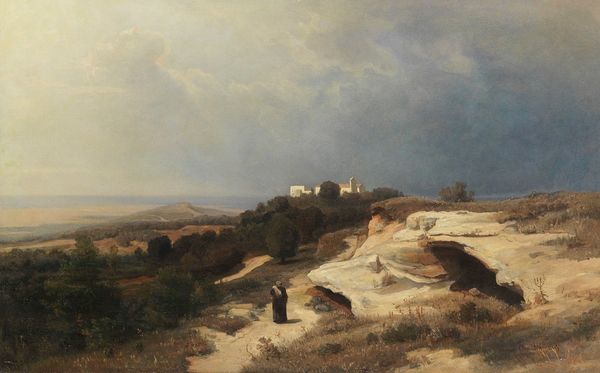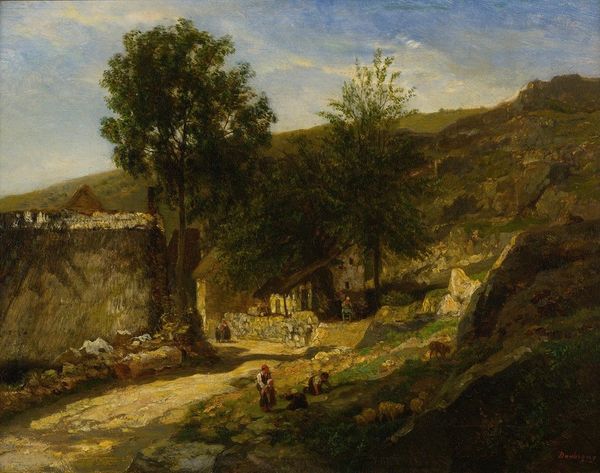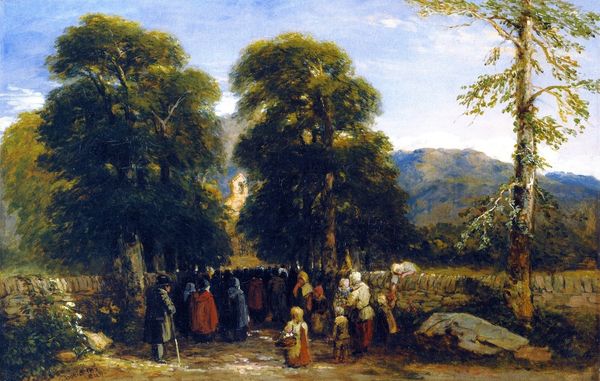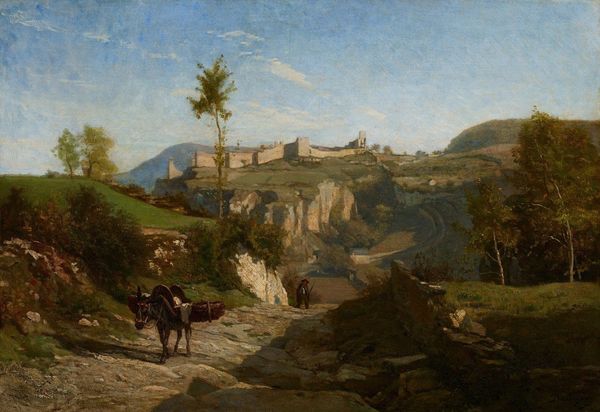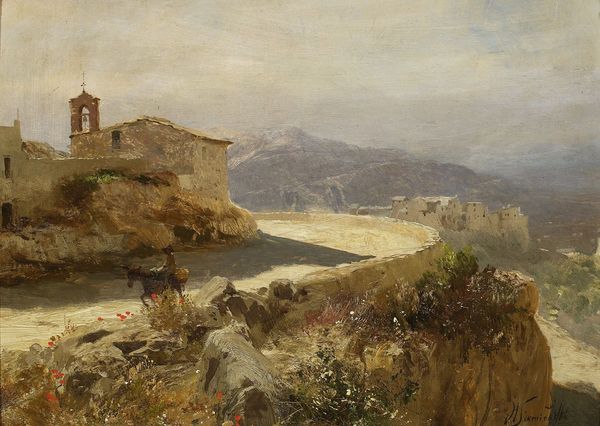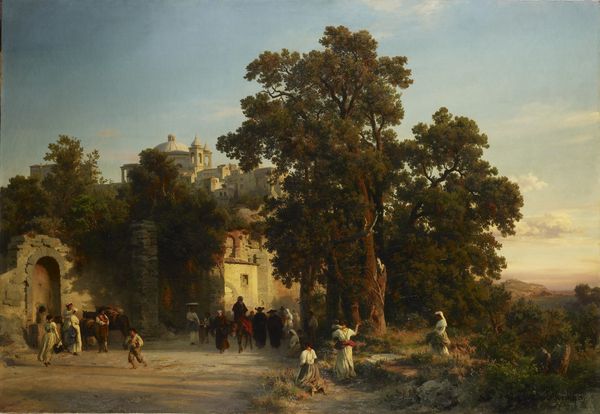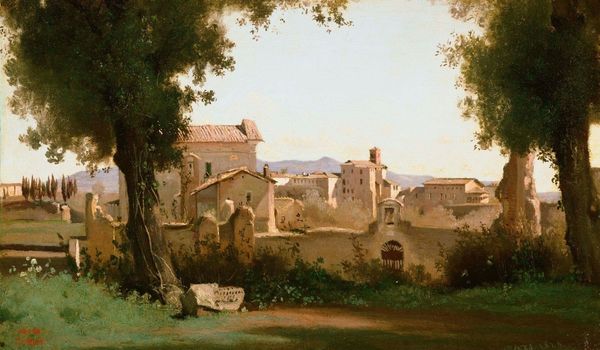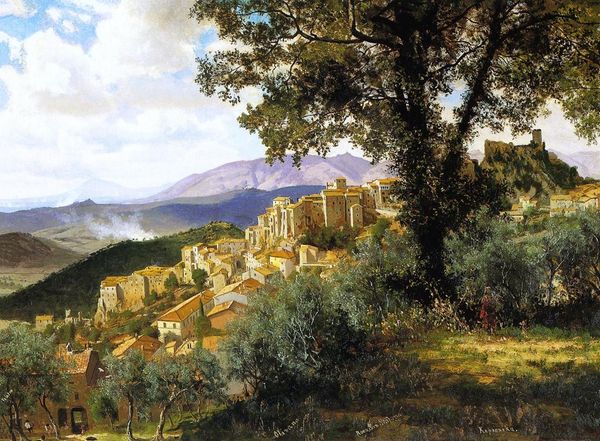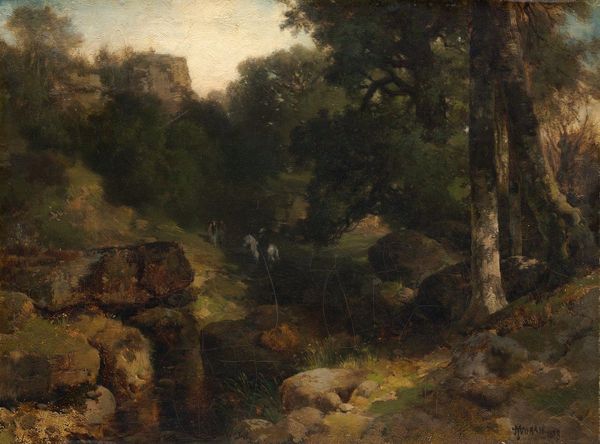
painting, oil-paint
#
painting
#
oil-paint
#
landscape
#
oil painting
#
genre-painting
#
history-painting
#
academic-art
#
realism
Copyright: Public Domain: Artvee
Editor: This is "Viaticum," an oil painting by Henryk Siemiradzki, created in 1889. It depicts a nighttime scene with figures carrying lanterns near a building that appears to be a church or monastery. There’s a statue of the Virgin Mary overlooking a village in the background. I find the figures, especially their posture and faces, somewhat sorrowful or resigned, and the presence of children hints at a sense of uncertainty and perhaps a shared grief. What stands out to you? Curator: It’s important to note that Siemiradzki painted this during a period of intense nationalism and cultural shifts across Europe. Consider what "viaticum" means—provisions for a journey, often the last rites given to someone near death. We can interpret the figures as being part of this final rite. Who receives it, though, may be more complex than one person alone. Editor: What do you mean? Curator: Look at the societal landscape of 19th-century Poland, which was not a nation-state, but partitioned amongst empires. Couldn't the ailing figure also represent Poland itself, fragmented and suffering? The children then take on this grief. The church looms in the landscape, representing religious consolation in a politically unstable era. Is this just an observation of faith, or an articulation of the role faith played during a historical subjugation of national identity? The landscape could represent this. Editor: That completely shifts my perspective. I had initially read the landscape as just a picturesque backdrop. Curator: Think about landscape painting itself within nationalist movements, its significance as cultural patrimony. How does this painting align with, or subvert, those traditions? How can realism become a lens through which the national trauma of the time is being played out? Editor: So, it is much more than genre painting. Thanks to your insights on the socio-historical factors, I can understand its complexity better now. Curator: Absolutely, art becomes powerful when we unpack these historical burdens and social dynamics reflected, sometimes subtly, on the canvas. It allows the artwork to continue talking about society through generations.
Comments
No comments
Be the first to comment and join the conversation on the ultimate creative platform.
